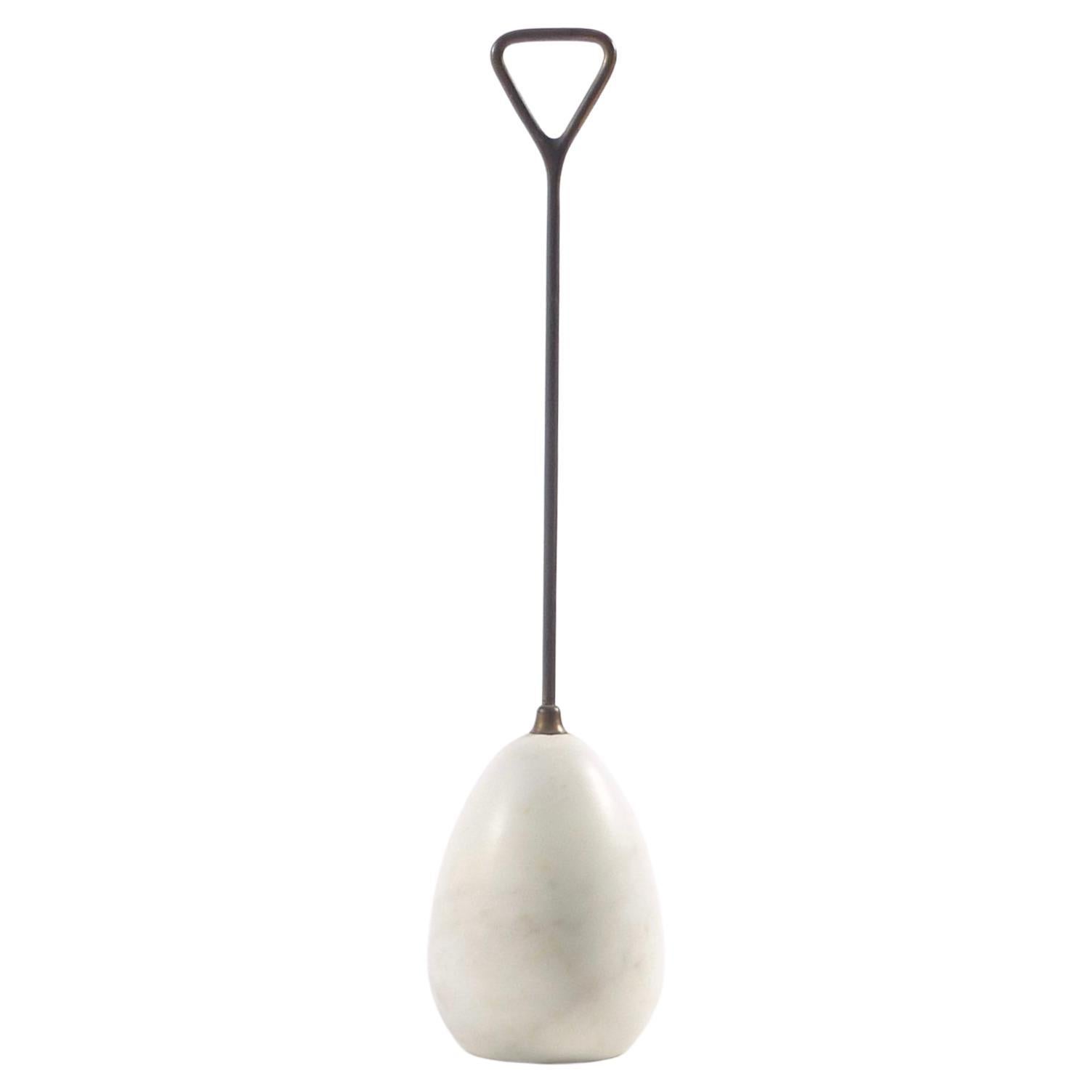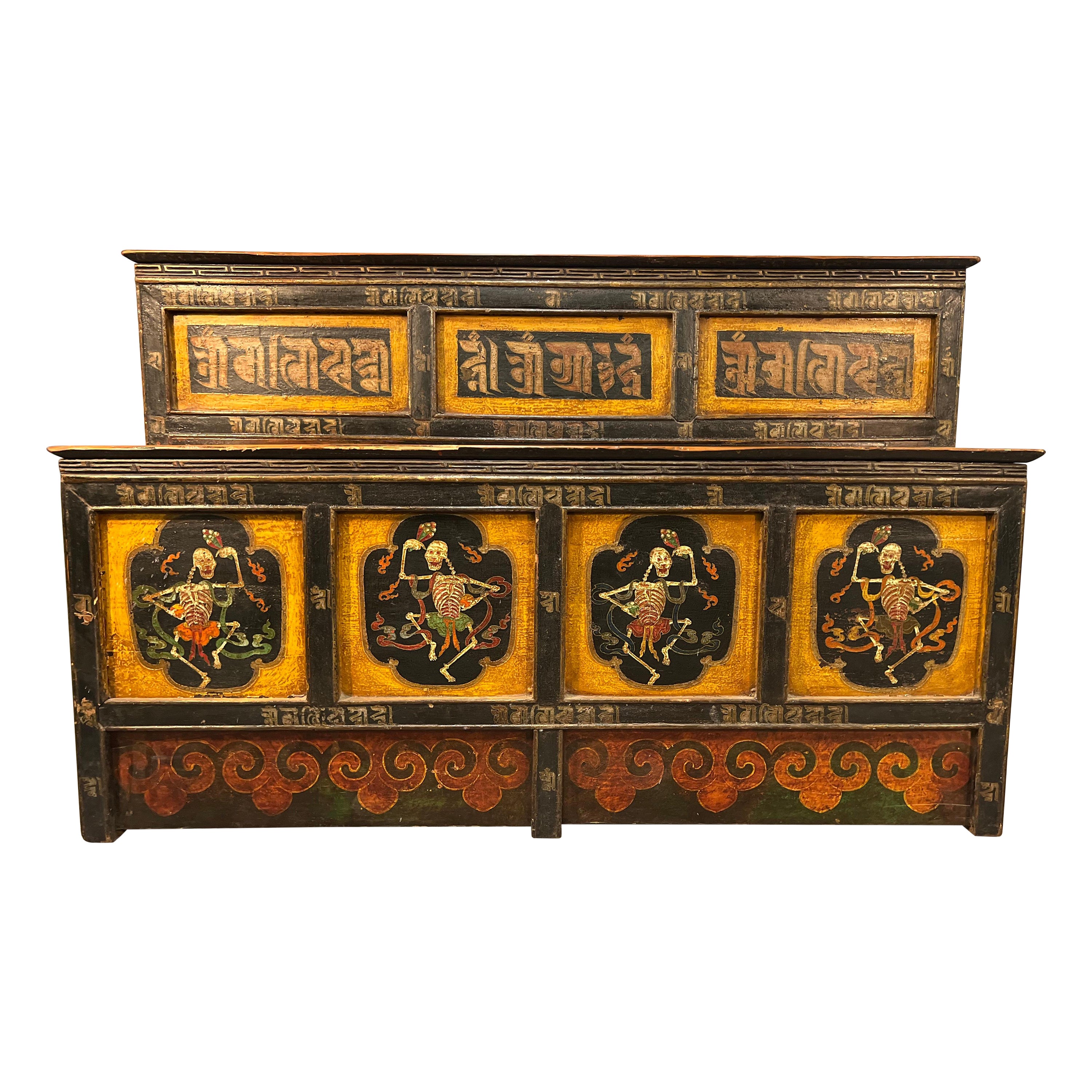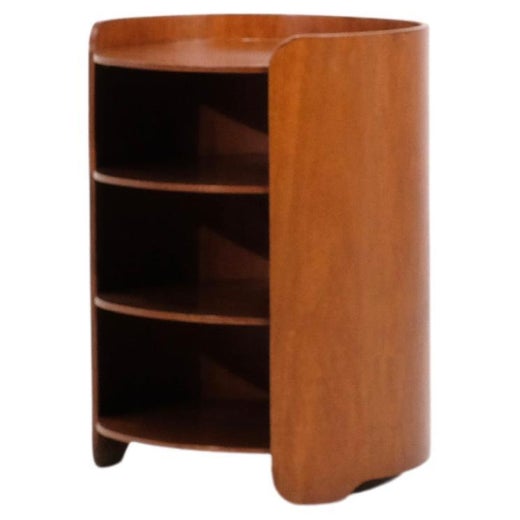Luigi Caccia Dominioni Set of Seven Handels in Black and Red ABS by Olivari 1975
About the Item
- Creator:Luigi Caccia Dominioni (Designer)
- Dimensions:Height: 1.19 in (3 cm)Width: 7.88 in (20 cm)Depth: 2.76 in (7 cm)
- Sold As:Set of 7
- Style:Mid-Century Modern (Of the Period)
- Materials and Techniques:
- Place of Origin:
- Period:
- Date of Manufacture:1970s
- Condition:Wear consistent with age and use.
- Seller Location:Montecatini Terme, IT
- Reference Number:1stDibs: LU5304239654312
Luigi Caccia Dominioni
To join the centenarian club is a remarkable feat in itself, but to live for over a century and leave a lasting impact on the world of Italian mid-century modern furniture design — just as pioneering industrial designer and architect Luigi Caccia Dominioni had — is extraordinary. His vintage table lamps, coffee tables, chairs and other furnishings are demonstrative of exemplary technique, theory and quality workmanship — all characteristics of the Milanese designer’s signature style.
Caccia Dominioni graduated from Milan’s oldest university, the Polytechnic University of Milan, in 1936. A leading center for design innovation during the first half of the 20th century, the institution’s alumni includes notable Italian architects and designers such as Gio Ponti, Vittoriano Vigano and brothers Livio and Pier Giacomo Castiglioni. In 1937, the Castiglioni brothers and Caccia Dominioni opened a multi-award winning studio together and presented groundbreaking designs for radios in Bakelite shells at the 1940 Milan Triennial.
The Second World War forced Caccia Dominioni to pause his professional ambitions in order to serve in the Italian military, and the postwar years saw much of his most esteemed designs take shape. In 1947, alongside Ignazio Gardella and Corrado Corradi Dell’Acqua, Caccia Dominioni founded the furniture manufacturing company Azucena, where he designed iconic pieces such as the Catalina chair and a range of lighting that includes the Lp10 wall light, the Lsp3 wall light and the Lsp6 flush mount light.
Like a fine Italian wine, Caccia Dominioni got even better with time. He collaborated with the likes of Olivari and Lualdi well into his 80s, debuting legendary pieces such as the C.d.o. chair and the Super door. And while many of his celebrated architectural works materialized during the 1950s and 1960s — such as the Teatro Filodrammatici and the Galleria Strasburgo — one of Caccia Dominioni’s best known structures, the fountain in Milan’s Piazza San Babila, was built near the end of 20th century when the designer was 83 years old.
Caccia Dominioni was a winner of the Compasso d’Oro, one of the oldest and most prestigious awards in the design industry. When he died at 103 in 2016, he left behind an exceptional legacy of furniture design and architectural innovations.
Find vintage Luigi Caccia Dominioni chandeliers and pendants, floor lamps, armchairs and other furniture on 1stDibs.
- ShippingRetrieving quote...Ships From: Borgo a Buggiano, Italy
- Return PolicyA return for this item may be initiated within 7 days of delivery.
- Luigi Caccia Dominioni Set of Six Catilina Chairs in Steel and Fabric AzucenaBy Luigi Caccia Dominioni, AzucenaLocated in Montecatini Terme, ITSet of six Catilina chairs with frame in painted steel, seat top in multi-layered wood, and upholstery-shaped polyurethane cushions covered with red fabric. This iconic seat was designed by Luigi Caccia Dominioni, and produced by Azucena since 1958. Luigi Caccia Dominioni firstly presents this seat at the XI Triennale in Milan in 1957 and from this moment Catilina became one of Luigi Caccia Dominioni’s classics. Caccia Dominioni created a new chair and also defined how to sit in it. Catilina is not designed for relaxation and letting go but for thoughtfulness and elegance. You could almost be transported back to ancient Rome ensconced in the seat of the Roman senator, Lucio Sergio Catilina, after whom the chair is named. In turn, the chair harks back to medieval thrones...Category
Vintage 1950s Italian Mid-Century Modern Club Chairs
MaterialsSteel
- Tobia & Afra Scarpa Armchair in Wood and Leather by Maxalto 1975 ItalyBy Maxalto, Afra & Tobia ScarpaLocated in Montecatini Terme, ITA single armchair with a frame in wood and cushions upholstery with leather (cognac shade) designed by Tobia and Afra Scarpa and manufactured by Maxalto from the Artona series 1975 c...Category
Vintage 1970s Italian Mid-Century Modern Armchairs
MaterialsLeather, Wood
- Luigi Saccardo UFO Pedestal Table in Steel and Glass by Maison Jansen 1970sBy Luigi Saccardo, Maison JansenLocated in Montecatini Terme, ITRound pedestal dining table model UFO with a base in brushed steel and tabletop in thick glass with a black enamel decorative circle. Designed by Luigi Saccardo and manufactured by Maison Jansen in the 1970s. Maison Jansen was a Paris-based interior decoration office founded in 1880 by Dutch-born Jean-Henri Jansen. From its beginnings, Maison Jansen combined traditional furnishings with influences of new trends including Anglo-Japanese style, the Arts and Crafts movement, and Turkish style. The firm paid great attention to historical research with which it attempted to balance clients' desires for livable, usable, and often dramatic space. Within ten years the firm had become a major purchaser of European antiques, and by 1890 had established an antique gallery as a separate firm that acquired and sold antiques to Jansen's clients and its competitors as well. In the early 1920s Jean-Henri Jansen approached Stéphane Boudin, who was then working in the textile trimming business owned by his father and brought him on board. Accounts of the arrangement vary. Speculation existed that Boudin was able to provide financial solvency to the prominent but capital-poor atelier. Boudin's attention to detail, concern for historical accuracy, and ability to create dramatic and memorable spaces brought increasing new work to the firm. Boudin was made director and presided over an expansion of the firm's offices and income. Not originally equipped with its own workrooms for producing furniture the firm began by relying upon antiques and the furniture contracted to outside cabinetmakers. By the early 1890s Maison Jansen had established its own manufacturing capacity producing furniture of contemporary design, as well as reproductions, primarily in the Louis XIV, Louis XVI, Directoire, and Empire styles. Throughout the firm's history, it employed a traditional style drawing upon European design, but influence of contemporary trends including the Vienna Secession, Modernism, and Art Deco has also appeared in Jansen interiors and in much of the custom furniture the firm produced between 1920 and 1950. Under Boudin's leadership, Maison Jansen provided services to the royal families of Belgium, Iran, and Serbia; Elsie de Wolfe, and Lady Olive Baillie's Leeds Castle...Category
Vintage 1970s French Mid-Century Modern Pedestals
MaterialsSteel, Iron
- Gio Ponti Set of Two Fireside Chairs in Black Lacquered Wood and Rush 1950sBy Gio Ponti, Casa e GiardinoLocated in Montecatini Terme, ITCouple of fireside chairs with a structure in black lacquered beech wood and a seat in hand-woven rush. This iconic fireside chair was designed by Gio Ponti in 1939 and produced by ...Category
Vintage 1940s Italian Mid-Century Modern Chairs
MaterialsRush, Beech
- Gio Ponti Set of Two Stools in Black Lacquered Wood and Fabric 1950s ItalyBy Gio PontiLocated in Montecatini Terme, ITSet of two stools with legs in black lacquered wood and seats upholstered in light blue fabric. Attribuited to Gio Ponti, Italian Manufacture 1950s Gio Ponti was an icon of the m...Category
Vintage 1950s Italian Mid-Century Modern Stools
MaterialsFabric, Wood
- Charlotte Perriand Set of Two Black Stools in Wood 1950sBy Charlotte PerriandLocated in Montecatini Terme, ITSet of two stools with three legs entirely realized in black stained wood, designed in the style of Charlotte Perriand and manufactured in the 1950s. Charlotte Perriand (1903-1999) is one of the most important female furniture designers of the mid 20th century. As early as 1927 Perriand produced a number of critically acclaimed innovative pieces of metal furniture, which drew the attention of Le Corbusier and Pierre Jeanneret. The result was the beginning of a work relationship that lasted many years. At Le Corbusier’s studio Charlotte Perriand developed a series of tubular steel chairs, among them the famous adaptable chaise longue, which was produced by Thonet two years later. Perriand’s work continued to evolve and in the mid 1930s, she started to experiment with natural materials such as wood and cane. She traveled to Japan in 1940 as an official advisor on industrial design to the Ministry for Trade and Industry to advise the government on how to raise standards of design in order to develop products for export to the West. Perriand adapted local techniques of woodwork and weaving - straw, bamboo and twigs becoming her materials of choice. It was especially after World War II, when Charlotte Perriand developed a new concept for the way of living by increasingly integrating the human dimension into her productions. Through flexible use of materials she achieved recognition with her pure and powerful style – as exemplified in her free form massive wood table models. Conscious of economic and social realities, she decided to opted upon large-scale production, and finding a new synthesis between tradition and industry. “Always concerned with innovation rather than trying to affirm a formula for renovation”, she designed various housing developments such as the Unité d’Habitation in Marseilles, with Le Corbusier in 1949, as well as rooms at the International Students’ Residence in Paris in 1953. Included was a library built in...Category
Vintage 1950s European Mid-Century Modern Stools
MaterialsWood
- Luigi Caccia Dominioni for Azucena, brass and marble doorstop, Italy design 1948By Luigi Caccia Dominioni, AzucenaLocated in Wargrave, BerkshireLuigi Caccia Dominioni, rare original brass and marble doorstop, Italy circa 1948, manufactured by Azucena Original first production as shown by the s...Category
Vintage 1940s Italian Mid-Century Modern Furniture
MaterialsMarble, Brass
- Tibetan Alter Table in a Yellow, Black and Red Painted FinishLocated in Dallas, TXA Tibetan polychromed alter table with painted skeletons. This highly decorative two tier table is painted in black, and yellow with red and green accents. It would make a great se...Category
Mid-20th Century Tibetan Tibetan Furniture
MaterialsWood, Paint
- 19th Century Red and Black Chinese Woven TrunkLocated in New York, NYA late 19th century Chinese trunk with striking red and black lacquer frame and hand woven willow side panels. Beautifully finished wooden interior. From Shanxi Province. CST366.Category
Antique Late 19th Century Chinese Trunks and Luggage
MaterialsWillow
- Qing Dynasty Low Red / Brow And Black Lacquered SideboardLocated in Kastrup, DKLow sideboard (kang sideboard) from the Qing period in elm wood with original red lacquer on the front, black lacquer on the sides. Front with double doors in the middle adorned with...Category
Antique Mid-19th Century Chinese Qing Furniture
MaterialsIron
- Japanese Antique Red and Black Lacquered Writing Table, SignedLocated in South Burlington, VTJapan antique handmade, hand carved temple low writing table finished in red and black lacquer - signed. A beautiful simple master work from an old private Japanese collection. Cr...Category
Early 20th Century Japanese Taisho Sculptures and Carvings
MaterialsWood
- Antique Shanxi Province Red Lacquered Elm Dining / Office Chairs, Set of 3Located in Chicago, ILAntique Shanxi Province Red Lacquered Elm dining / office chairs - Set of 3 These Antique Elm Red Lacquers Dining Chairs are from the Shanxi...Category
Mid-20th Century Chinese Chinese Export Furniture
MaterialsElm, Lacquer






